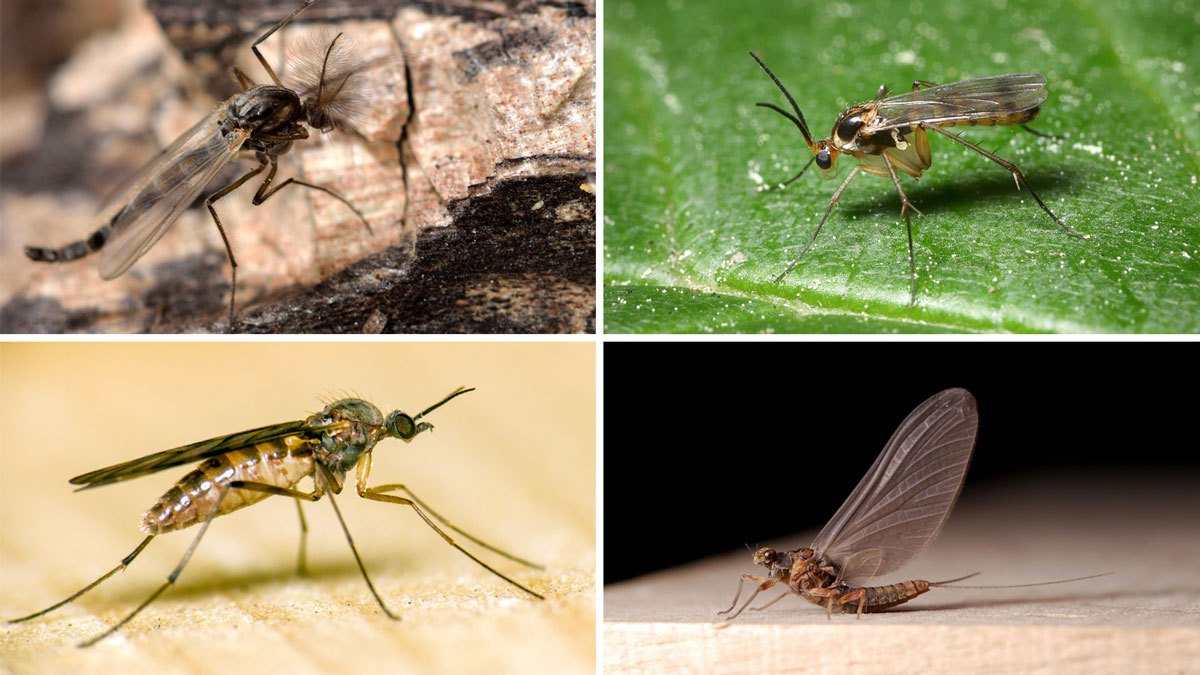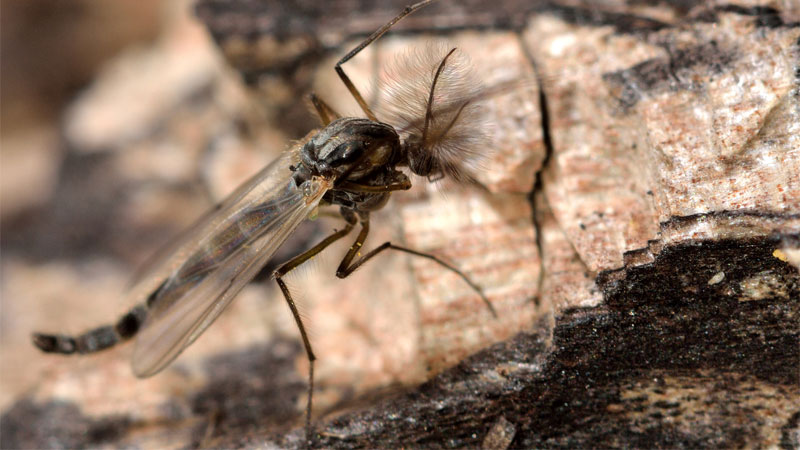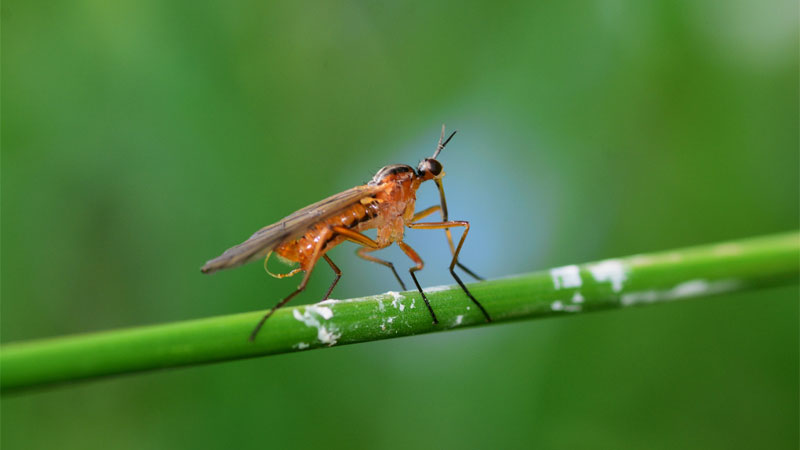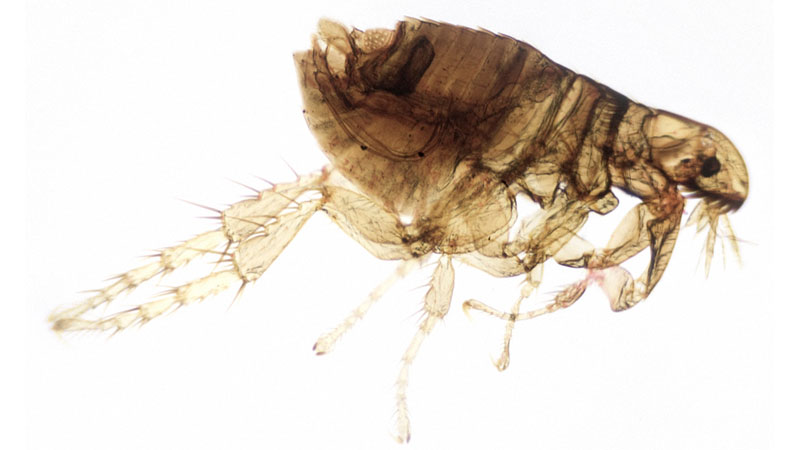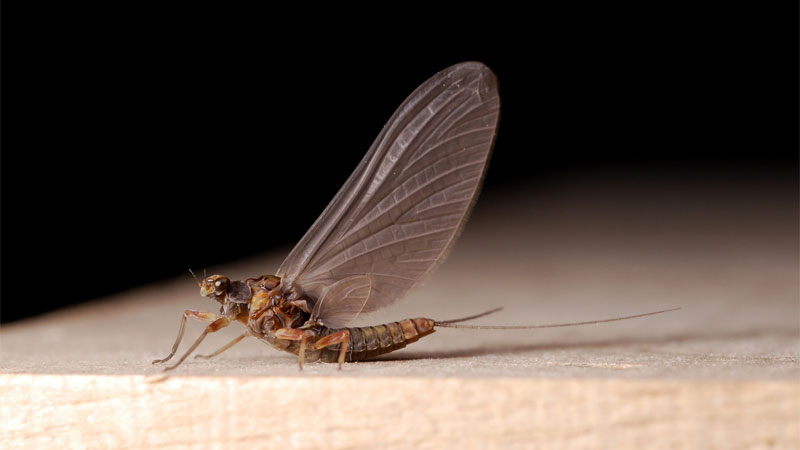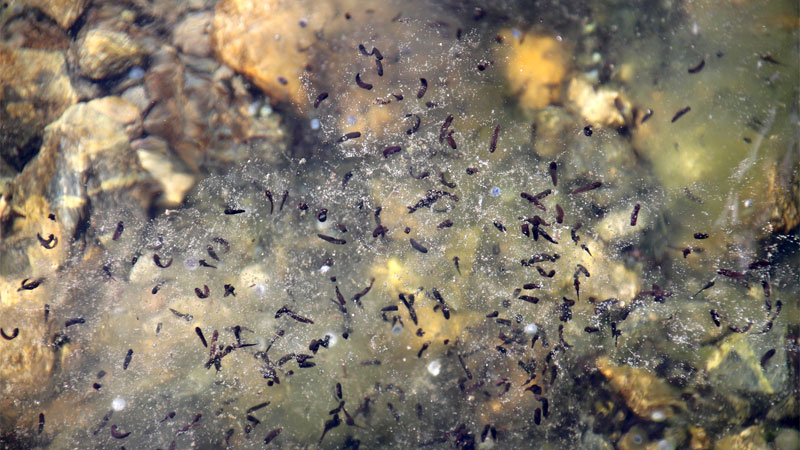If you’ve ever visited the Florida Keys, you’re likely to remember five things: the miles of highway stretching over open ocean, the beautiful sunsets, swimming with rays, the sounds of frogs at night, and the mosquitoes.
In fact, this last memory will often trump the rest, even though mosquitoes can be found throughout much of the country. But the sheer amount of loathing towards mosquitoes (albeit understandable) can lead to a number of other critters sharing your wrath.
Mosquitoes are actually a type of fly, and this lends to a lot of other fly species being mistaken for them. Let’s take a moment to examine some of these look-alikes, which may resemble mosquitoes either due to their appearance or as a result of their bites. Perhaps some innocent lives might be saved – or guilty parties won’t escape blame – as a result.
But first, here’s what a typical mosquito looks like up close:
See Also: What Temperature Will Kill Mosquitoes?
Bugs That Look Like Mosquitoes
#1 – Biting Midge Fly
Among the various midges out there, the species Leptoconops torrens gets a special mention. Biting midges are often called “no-see-ums” in certain parts of the US. They closely resemble mosquitoes, only with moth-like fuzzy antennae.
They can be found from California to Texas, as well as Florida, although Arizona is too dry for them. A biting midge fly is closely related to the Bodega black gnat (Leptoconops kerteszi), which is found in many parts of the world.
What makes this particular midge so mosquito-like isn’t just its appearance, however. They are vicious biters, and the vampiric attacks by this species are known to become so bad that they can completely stop construction and other projects.
See Also: 11 Most Common Swimming Pool Bugs
#2 – Buzzer Midge
The buzzer midge (Chironomus plumosus) bears a pretty strong resemblance to mosquitoes, although they’re very different. Their eggs sink to the bottom of calm waters, and the larvae, which are commonly known as bloodworms, will swim back to the surface upon hatching.
Those that don’t literally become fish food will eventually become an adult whose color varies depending on their environment.
Despite having bodies similar to a mosquito, buzzer midges don’t bite and are generally harmless. However, they get their name from their loud buzzing, which (when paired with their love of lights) can challenge your sanity.
#3 – Chigger
You’re not likely to mistake a chigger for a mosquito, but their bite is a different matter. These nasty arachnids live mainly in the southern states and have the ability to jump at targets.
While they don’t suck blood, their bites inject a saliva filled with dissolving chemicals that can leave the wound quite painful and itchy, sometimes even resulting in an allergic reaction.
#4 – Crane Fly
Of all the critters commonly mistaken for mosquitoes, none are more notorious than the crane fly. These flies are a major bug phobia for many, but they won’t actually hurt you. Their larvae can damage lawns, although the larvae of a few species will actually consume mosquito larvae.
Crane flies have a very similar body and are known to fly at your face, even though they mean you no harm. They have much longer legs than mosquitoes and are also larger with a wider wingspan. Of course, trying to tell the two apart when one’s flying towards you isn’t always easy, so these generally harmless critters frequently get a bad rap.
#5 – Dance Fly
These members of the Empidida family have quite a lot of variation to them, but some have a similar body shape to mosquitoes. Curiously, these flies have a morbid mating ritual where swarms of males will perform coordinated aerial dances, then each male will present their chosen female with a dead fly as a courting gift, which she’ll then eat before they finish their mating.
They have longer, thicker legs than mosquitoes, which may be the best way to tell the two apart – if you’re willing to get close enough, of course. Outside of being a nuisance when mating, dance flies are actually beneficial critters who will eat small insects and (like a large percentage of fly species) even help with pollination.
Known to present an unusual degree of intelligence for such a tiny insect (and a mischievous streak to boot), this is one mosquito-like insect you definitely want in your garden.
#6 – Dixid Midge
Hailing from the genera Dixa and Dixella, these midges resemble mosquitoes in a number of ways. Their larvae can be mistaken for mosquito larvae and are similarly aquatic.
As adults, they’re known to closely resemble mosquitoes in shape, although they have shorter legs and much smaller bodies in all stages of life. Another important distinction is that this group of midges are docile and feed exclusively on phytoplankton and algae.
#7 – Dragonfly
There are a lot of differences between dragonflies and mosquitoes. Dragonflies are much larger, usually more brightly colored, and capable of some pretty amazing aerial maneuvers. However, they can still be mistaken for a mosquito when they’re resting or you happen to just catch a glimpse of one darting by.
Of course, dragonflies aren’t harmful and can be quite beautiful to watch, so they’re a great excuse to always make sure what you see is actually a mosquito.
#8 – Flea
Let’s face it, there’s no way you would mistake any species of flea for a mosquito if you saw one. But the confusion comes from the fact that both feed on blood and you might not have seen what bit you.
There isn’t much else to say here except to examine the bite area to help determine who’s responsible.
#9 – Fungus Gnat
While obviously smaller than mosquitoes, fungus gnats are a common house pest that can still be mistaken for tiny mosquitoes. They make up six of the seven families in the superfamily Sciaroidea and are both beneficial critters and pests at the same time. Unlike mosquitoes, fungus gnats feed mainly upon fungi and are an integral part of the decomposition process.
While they can be pests around your houseplants, they also signal that your plant has a fungal issue or root rot. They also assist in breaking down your compost pile, and the larvae of a few species are even predatory while many adults are pollinators.
While often having somewhat long abdomens, the average fruit fly has a more compact body, much like houseflies, than mosquitoes and are mostly harmless.
#10 – Long-Bodied Cellar Spider
Sometimes referred to as daddy long-legs, the long-bodied cellar spider (Pholcus phalangioides) has a long, thin abdomen and long legs that might make you think there’s a mosquito on the wall until you take a closer look. These arachnids are common home invaders and actually help protect against more dangerous spiders.
They’re harmless to humans, and their longer legs and lack of wings tend to be the easiest way to distinguish them from mosquitoes – once you’ve calmed enough to check!
#11 – Mayfly
Mayflies are an important insect, but not for the reasons you might think. Seeing one is an indicator of how healthy a body of water is, as they won’t go near polluted areas.
Making up the order Ephemeroptera, these aren’t actually flies and have a very unusual lifespan. The nymphs are aquatic and can live several years, but the adult mayfly may only survive a single day.
Adults can look like mosquitoes when in flight. However, they have wings that don’t lie flat and two to three tails, depending on the species. Adult mayflies actually lack mouthparts and will only touch upon the water momentarily for a drink. If you see a mayfly, you should be grateful, as you know the body of water you’re visiting is healthy.
#12 – Sandfly
Sandflies aren’t any particular species, but instead a generic term for any biting fly found in sandy areas. While some may more closely resemble the chubbier bodies of house flies, and horse flies commonly bear this moniker in the US, others look a lot like mosquitoes. Those species often have long abdomens, giving them a much closer resemblance.
Biting midges are also often referred to as sandflies, and (like many other sandflies) the females do drink blood. Whether you encounter a solo sandfly or a swarm, they’re generally pests you’ll want to avoid.
#13 – Wood Gnat
The family Anisopodidae, more commonly known as the wood gnats, tend to bear some resemblance to mosquitoes, especially if you catch one flying at your face. However, these small insects are harmless outside of threatening your sanity.
Depending on the species, they tend to feed on either fungi or decaying organic matter. In fact, they’re commonly found in rotting wood stumps, hence the name. They’re highly attracted to lights and can get quite noisy, which is where they tend to become pests. They can also bother livestock by getting caught in their eyes and ears.
#14 – Honorable Mention: Tadpole
Let’s be honest, tadpoles aren’t bugs by any means. However, we had to mention them because these immature toads and frogs closely resemble mosquito larvae.
The key difference is their size and shape, with tadpoles being larger and stubbier. As tadpoles mature, the appearance of hind legs is also a dead giveaway, but in those early days, it can be easy to confuse the two at a glance.
- How to Get Rid of Hawks - March 8, 2024
- How to Get Rid of Pill Bugs (Rolly Pollies) - March 1, 2024
- How to Get Rid of Groundhogs (Woodchucks) - February 5, 2024

